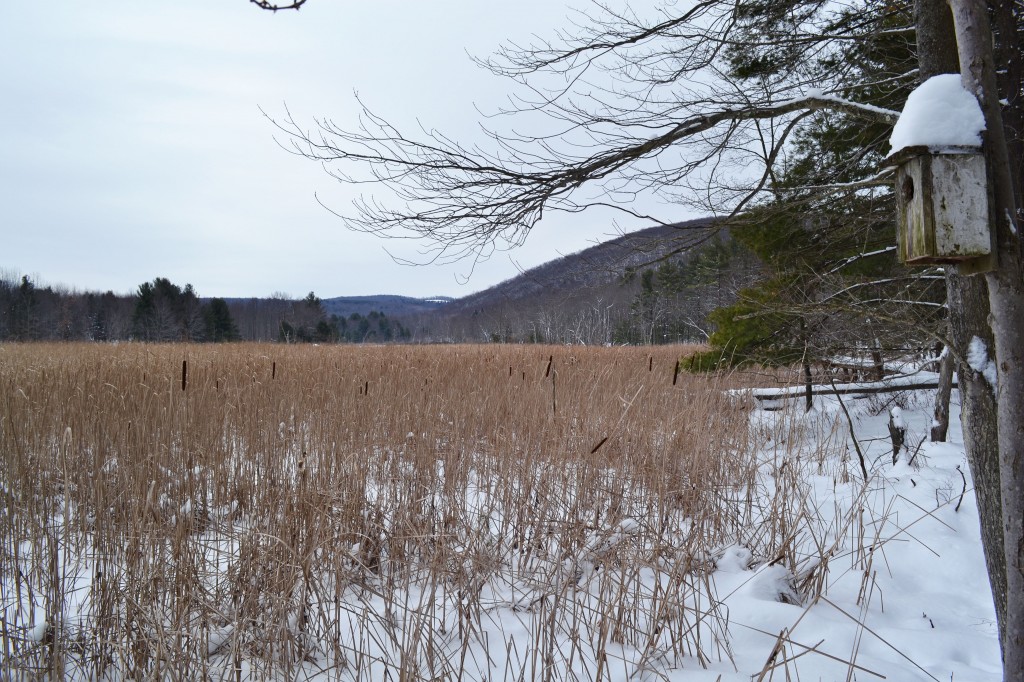A tree falls in the woods. Eric Grando, assistant steward of the Nature Preserve, hears the sound.
“There ought to be more students to hear this,” said Grando, a senior majoring in environmental science.
The winter season is far from a hiatus in the Nature Preserve. Contrary to popular belief, life finds a way despite the cold, snowy conditions. For proof, just look at the tracks in the snow.
“Snow tracks provide evidence for all the different animals traveling throughout the Preserve in the winter,” said Dylan Horvath, the Nature Preserve’s steward. “There’s mice, voles and muskrats.”
Muskrats are actually a prominent source of food for another animal that hangs around for the winter: the mink. The elusive mink is a semi-aquatic weasel that burrows by the bridge during the earlier months of the winter.
Fishers, another member of the weasel family, are also present in the Preserve throughout the winter. Found in the treetops, they’re one of the Preserve’s largest dwellers.
The treetops are further occupied by over 40 species of birds. Woodpeckers and chickadees scavenge for hibernating insects during the day, then go into torpor at night. This low-energy state is like a partial hibernation: It helps animals conserve energy.
Crows, ravens and red-tailed hawks can also be spotted overhead. Birds, such as hawks, provide an indication of the overall health of an ecosystem. Their presence means a diversity of food sources and habitats.
Turkeys, which have historically been intertwined with the Nature Preserve, are now less common. Horvath said he hasn’t seen a turkey there in the past three years.
“They were present, though, this past year due to an excess acorn crop,” Horvath said. Every few years, oak trees produce an abundance of acorns to ensure that some go to seed instead of becoming another creature’s lunch. “Other than that, turkey populations may have been virtually nonexistent because of the lack of forest undergrowth.”
In this case, it is the absence of a species that may indicate a lack of overall ecological diversity.
A walk in the woods is almost certain to reveal an expansive deer population. Over the past few decades, deer populations have reached destructively high levels. They scavenge the forest for food, nibbling at new trees and shrubbery along the way. Lately, they’ve been going after the fall’s acorn crop.
“Much of the ground in CIW Woods has been turned over because of the deer searching for acorns,” Horvath said.
Horvath stays busy during the winter maintaining the Preserve’s natural beauty. Branches heavy with snow need to be shaken, bridges out of place need to be straightened and fallen trees need to be moved off of the trail.
This Saturday, Horvath is hosting a Porcupine Walk. Porcupines conserve energy in the winter by limiting their movement, which makes them easier to spot. The treetops in the hemlock groves are a likely site. The hike will meet at 1 p.m. at the top of Lot M.
White, calm and quiet, the Nature Preserve is a place to clear the mind and absorb the ebb and flow of the natural world. It only takes presence to be there and listen.



